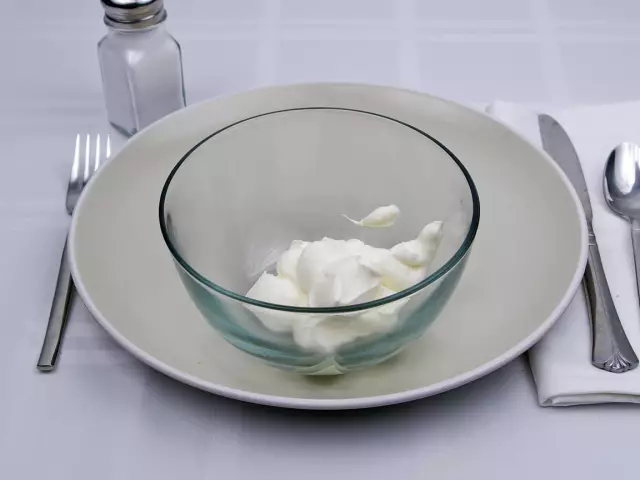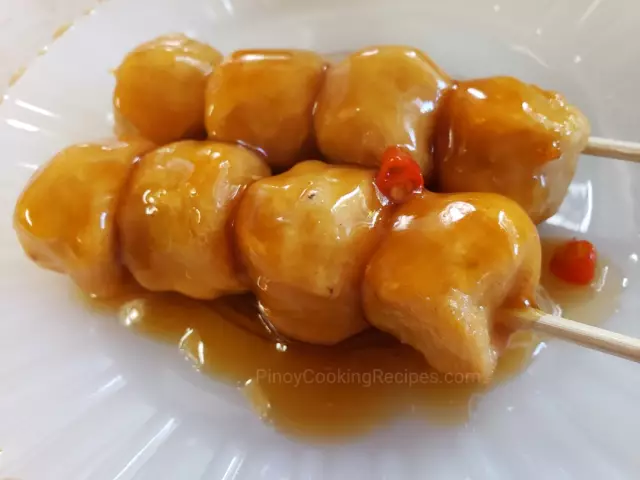- Author Rachel Wainwright [email protected].
- Public 2023-12-15 07:39.
- Last modified 2025-11-02 20:14.
Flying fish roe
Flying fish roe (or tobiko) is the most outlandish of all exotic seafood.

Description
Tobiko is the Japanese name for caviar of marine fish from the Flying family, which are part of the Sarganiformes order. In total, there are about eighty representatives in the family, which are united by one distinctive feature - a peculiar structure of the body and internal organs, thanks to which the fish can fly soaring over the waves.
The main feature of flying fish are pectoral fins, wide and long (2/3 of the body length), set high. In flight, they spread like a bird's wings. The powerful tail fin has a strongly developed, elongated lower part, due to which the fish, having escaped from the water and pushing off from its surface with strong transverse strokes, is able to significantly increase its speed. The flight is facilitated by a large swim bladder, which contains approximately 40 cc. see air, and it occupies more than half of the body's volume. Also, flying fish have long pelvic fins, which, however, are not used by all species of this family.
Fish can jump out of the water both in case of danger and for no apparent reason. People who witnessed the flight of fish compare their movements with the trajectory of a flat stone thrown almost horizontally towards the water, which jumps on the surface of the water, flying away over long distances. Fish float in the air for up to ten seconds, overcoming up to 400 meters during this time. They are unable to control their flight, which often leads to the fact that they crash into some kind of obstacle, for example, into the side of the ship.
The length of the body of the fish can reach 50 cm, the head is flattened in front, short, with large eyes. The back of a flying fish is dark gray, and the sides are gray-blue. The pectoral fins are pointed or rounded-quadrangular, transparent gray or dark (brown, green, blue) with colored stripes or spots, which gives the impression of a rainbow glow in flight.
All types of flying fish live in tropical seas with temperatures of at least 20 degrees. The greatest variety of species can be found in the western Pacific and Indian Ocean. Some species live exclusively in the coastal zone, while others prefer the open ocean.
Fish swim in small schools and prefer to stay close to the surface of the water. They feed on plankton, fish larvae and small marine animals. Propagated by red-orange caviar, no more than 0.8 mm in diameter, which is attached mainly to algae or any floating object.
The use of flying fish roe in cooking
Flying fish have tender and tasty meat, therefore, in many countries, flying fish have commercial value. They are especially popular in Japan. This country accounts for more than 50% of the world fish catch. But in addition to meat in Japan, tobiko, caviar of flying fish, is very popular.
Tobiko is used in the preparation of rolls and sushi, for decorating dishes and salads. Flying fish roe has a natural orange color, which is artificially enhanced with the help of ginger. Other natural dyes (wasabi juice, cuttlefish ink, etc.) can also be used, thanks to which the caviar is dyed green and black.
The caviar processing technology has remained unchanged for over 500 years. Raw caviar is first kept in a special sauce, as a result of which it acquires a salty smoked flavor. If we compare the caviar of flying fish with salmon, which is more familiar to us, then it will seem drier in taste and will slightly crunch on the teeth. But the Japanese love tobiko very much; they not only include it in many national dishes, but also eat it as a separate dish. As a rule, flying fish caviar gets to our counters frozen or in the form of canned food.

The composition and calorie content of flying fish roe
Tobiko contains more than 30% of valuable proteins, which are easily absorbed by the body, as well as mineral salts, fats, phosphorus, potassium, silicon, iodine and other macro- and microelements. It contains the full composition of B vitamins, vitamins A, C and D.
When depleted, caviar is recommended to be used as a general tonic. They also eat it during strong physical exertion, anemia and during pregnancy, since it is considered a valuable energy and high-calorie food product.
The calorie content of tobiko is approximately 72 kcal per 100 g of product.
Contraindications
It is not recommended to use flying fish roe in case of individual intolerance or if you have a history of allergic reactions to seafood and fish.
Found a mistake in the text? Select it and press Ctrl + Enter.






